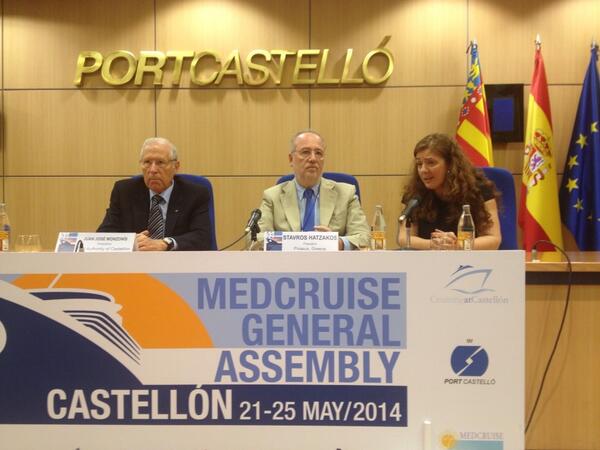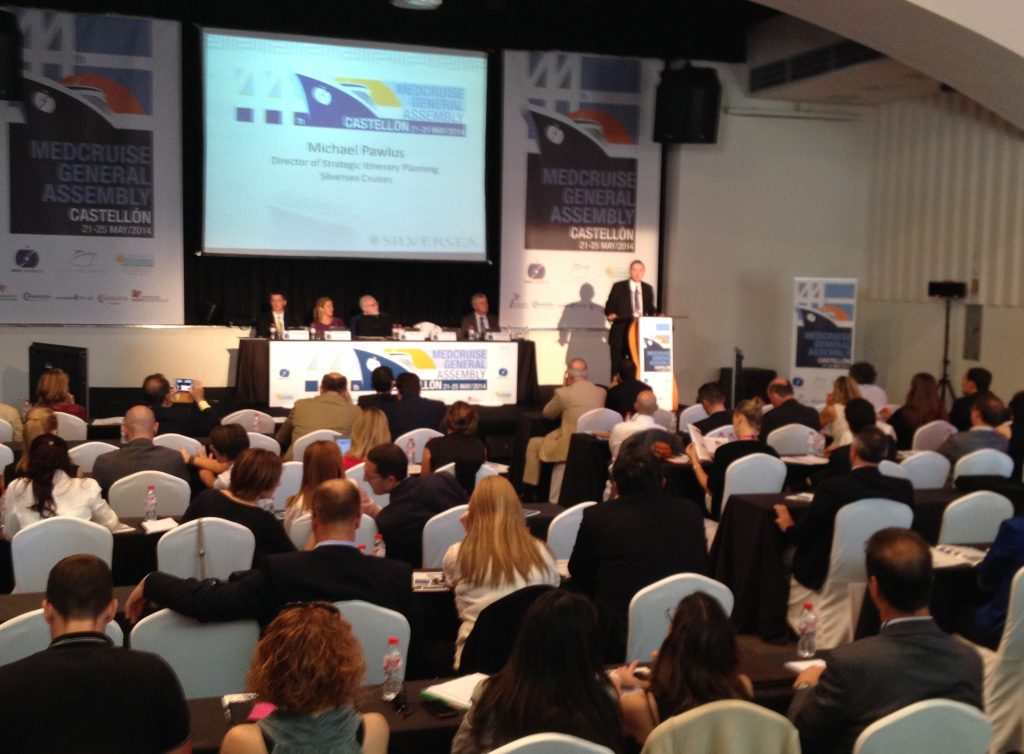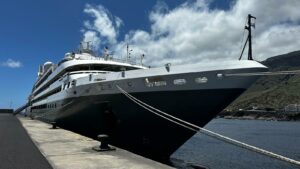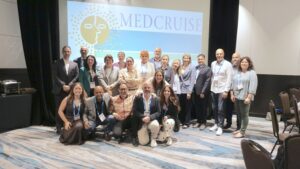Ports form all over Southern Europe have gathered in Castellon attending the major event of the cruise sector this Spring the 44th MedCruise General Assembly.
The General Assembly of the Association representing more than 100 ports in the Med and its adjoining seas started on Wednesday 21 May 2014 with 125 participants from 66 MedCruise members welcoming on Thursday three additional port to the MedCruise family.
The three new members are Istanbul Taranto and Trabzon.
The GA also welcomed two new associate members Allegra Montenegro and B&A Europe. Following the new expansion
MedCruise represents ports that host more than 28 million cruise passenger movements while several cruise related companies and agents have joined its associate members program. During his opening speech Stavros Hatzakos MedCruise President emphasised that through the active participation of its member the expanding MedCruise gains in strength and allows representing Med Ports around the globe. Praising the positive outcome of the intervention made by the join CLIA Europe-MedCruise statement in October 2013 and the move of the European Commission to simplify visa code for third-country visitors to the Schengen passport-free area the MedCruise President emphasised that through collaboration the cruise industry and the port industry might only benefit and expand cruise activities.
As Stavros Hatzakos noted MedCruise advances the collaboration with cruise lines executives through their presence in our general assemblies but “We want to do this through collaboration with the association representing cruise lines around the world as well”.
 He went on to detail the desired nature of the latter: “This collaboration needs to respect the fundamentals of the market. In each sector there are always the interests of those demanding services and the interests of those supplying services. While each side advocates its interests through the respective associations and should continue to do so collaboration is essential. Collaboration can be better done when ports in the Med and its adjoining seas proceed in engagement collectively through MedCruise”.
He went on to detail the desired nature of the latter: “This collaboration needs to respect the fundamentals of the market. In each sector there are always the interests of those demanding services and the interests of those supplying services. While each side advocates its interests through the respective associations and should continue to do so collaboration is essential. Collaboration can be better done when ports in the Med and its adjoining seas proceed in engagement collectively through MedCruise”.
MedCruise members gathered in Castellon discussed the latest developments in the cruise sector and planed together for the future. The highlight of the first day was the Round table devoted to Sustainable Cruise with the Participation of Rob Ashdown (CLIA Europe Secretary General) Elisabetta Pinna (Costa Crocier) Manos Shinakis (“Sustainable Cruise” Project) Stavros Hatzakos (MedCruise President) Thanos Pallis (MedCruise Secretary General) and the intervention of Dimitrios Theologitis Director for Ports and Port Policy of the European Commission.
The session explored first the potential of cruise ports and cruise lines to work together at local level and create clever and innovative solutions referring to waste reception facilities and waste collection practices at sea and ashore.
Discussion then moved to the ways that policies at international level might facilitate ˜Green cruise ports”. Rob Ashdown focused on the need for sophisticated market driven practices and policies rather than top-down approaches wheres Stavros Hatzakos mentioned the importance of networking.
The second day started with a Ports & Cruise Lines Session on “Cruising the West Med”. Miguel Rojo Orte Castellon Port reported the progress taking place at the local ports with the intervention followed by presentations by Simon Dowes Holland America Line Kay-Uwe Maross AIDA Cruises and Michael Pawlus SilverSea Cruises.
Simon Dowes Holland America Line noted that 2014 is a good year for Holland America in Europe. When Europe has more port class than any other region South European Ports rate high. Yet rates suggests that there is still room for improvement Simon also noted that fuel costs are a major issue especially when ECA implemented. The advantage of ports in the Med is that operations are comparatively cheap i.e. Alaska costs twice as much comparing to operation in the Med.
A third major issue discussed is ECA as deployment shifts related to ECA are expected in the near future. While the Med might even been positively affected by operational restrictions to be applied in other parts of the world there is a note of caution because increased port time increases fuel costs – when low speed excursions take place and port profitability is on the table.
Presetning Aida Cruises deployment strategy Kay-Uwe Maross focused on seasonal deployment track of cruises the absense of interporting the search for variety of countries the significance of slow steaming and the cost / revenue optimization.
Michael Pawlus SilverSea Cruises focused among others on the parameters of success including in its list Guests interest and satisfaction port costs and fuel costs Evening and overnight calls mixture of experiences Shore excursion selections and their marketability.
The ideal service speed between ports is between 13 and 15 knots. The Mediterranean is core to Costa Cruises’ programs said Susanna Illiano port area coordinator for the Mediterranean Caribbean Red Sea and Arab Gulf. She said that Costa calls at 93 ports in the Mediterranean offering interporting in 32. A key factor going forward was transparency of port costs according to Illiano. She added that Costa needs to understand what it is paying for. In this picture port agents play a key role and they need to be proactive and transparent as well in addition to being financially stable. Illiano said that Costa will do random audits to ensure the quality of its port agents.
For the Royal Caribbean brands Mediterranean deployment for 2014 will be consistent with 2013 according to Adam Sharp manager of port operations and guest services for Europe. A turning point will come this fall with the Oasis of the Seas sailing a few cruises out of Barcelona before the Allure sails a full summer season in 2015. With the bigger ship however come issues such as port and city congestion which he said Royal Caribbean is working on.
For Fred. Olsen Cruise Lines Peter Deer commercial director said the challenge is that most of the passengers have already travelled in the Mediterranean and there is competition offering cheap flights and stays in the region. Thus the Mediterranean is a low-revenue alternative for the brand during the summer when it tends to concentrate on Northern Europe. So what can ports do to attract Fred. Olsen? Offer something different to encourage us to come Deer said including gifts for passengers entertainment and special events. Thirty to 50 percent of Fred. Olsen’s passengers take shore excursions according to Deer which means up to 50 to 70 percent will go ashore on their own. Hence it is important that ports provide good relevant information to these passengers as well.





